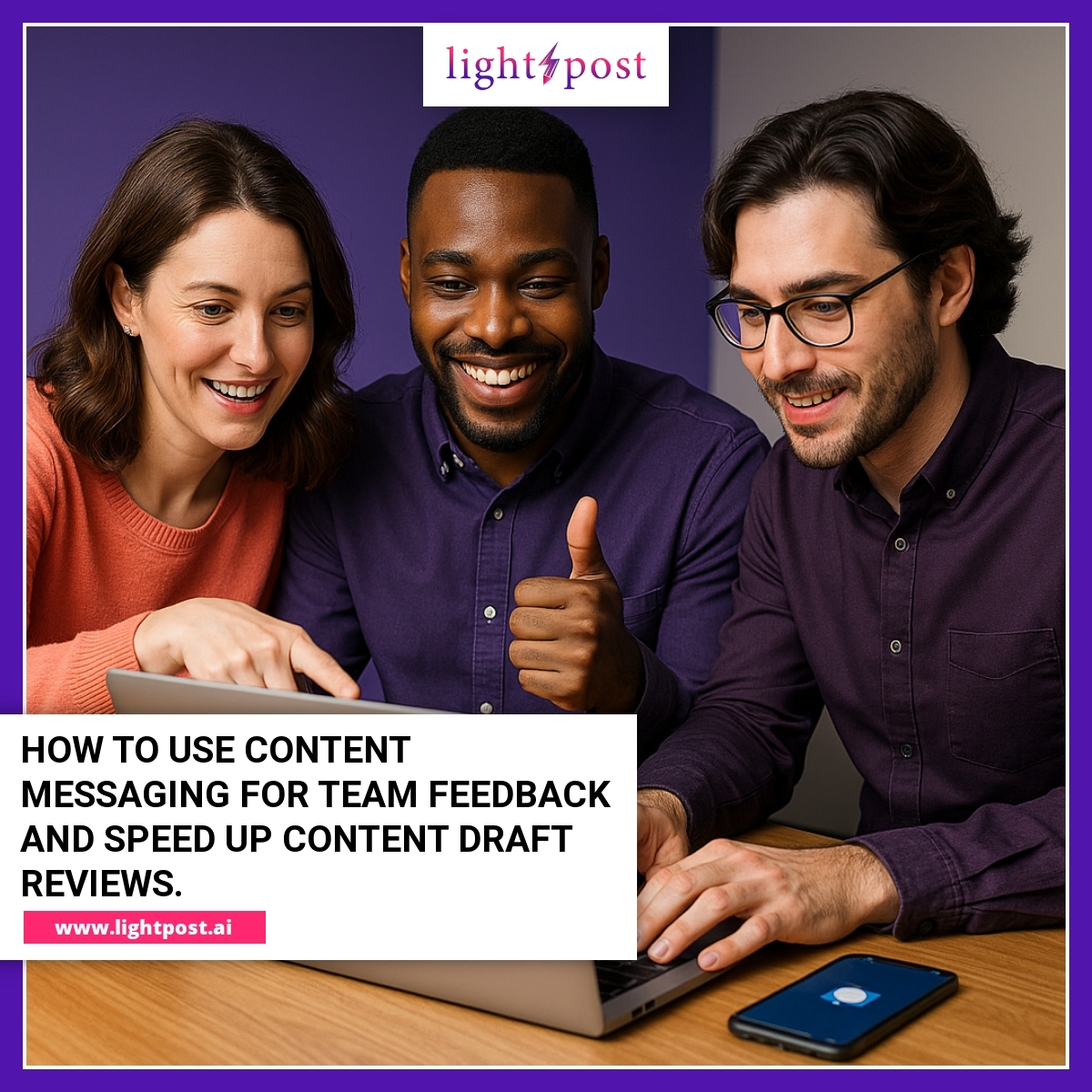What actually happens when you bring your offline brand online—Lightpost’s guide to merging your in-store story with digital content that clicks.
“Action is the foundational key to all success.” — Pablo Picasso
When a beloved local brand decides it’s time to go beyond the walls and shelves of their shop, the shift feels huge. One day you’re pouring lattes and recognizing every regular by their first name—the next, you’re expected to tell that story online, build trust with strangers, and create content that gets real results. The pressure to “digitally transform” can make even the coolest pro sweat a little… What if the magic disappears somewhere between the in-store welcome and the web?
Bringing a brick-and-mortar story online isn’t just about logos or fancy fonts. It’s about syncing who you already are—the smells, the smiles, the handwritten notes—with a digital identity people actually click with. Lightpost has helped businesses make this leap smoothly, showing how your true story not only survives the leap online but wins you new fans. So how do you go from shop-window star to online favorite—without losing your spark or spending months lost in tech jargon?
How do you build an online brand when your business started offline?
How to build an online brand when your business started offline comes down to treating your store’s personality as a blueprint. Before designing any website or Instagram graphic, spend a morning documenting the colors, language, playlist, staff banter, and customer quirks that make your storefront yours. Snap photos of signage, record short customer greetings, and jot down catchphrases customers repeat—capture the whole vibe, not just the visuals.
Next, use a framework like Lightpost’s brand mapping templates to translate those traits into digital assets. For your visuals: snap close-ups of your in-store displays and color-match these to your brand palette in Canva or Adobe Express. For copy: turn overheard in-store phrases into headline starters and captions. Pro teams will email a set of questions to their best local fans, getting immediate feedback about what should stay or go as they shift online—do this using a free Google Form before dropping cash on ads.
Before you build out your site or launch on socials, prep a quick-reference kit: high-res logos, your color HEX codes, up-to-date staff bios, your five “never break” brand rules, and three sample post templates. Avoid the rookie mistake: resist copying top competitors word-for-word. Your regulars buy from you, not a chain.
Why everyone skips the “brand audit” step straight out of the gate.
- Most owners jump right into templates and ads, but forget a deep-dive “brand audit.” Slow down: list every item that gives your shop character—paint color, staff nicknames, playlist favorites. Use the notes app on your phone every day for a week.
- Pros tap platforms like Lightpost to guide that audit—scanning everything from photo files to physical swag, cataloging shop-specific language and event posters. This ensures no signature detail gets lost in the shuffle to digital.
- Don’t get lazy and imitate a big-box look: check Lightpost’s blog post on SEO strategies for 2025 to see how unique brand DNA helps you stand out online. When you preserve localized quirks, customers recognize you—whether they’re scrolling or walking in.
If you’re worried your physical charm won’t translate online, remember—big results happen by keeping your roots visible. So what’s the real upside when you pull both online and in-store worlds together?
What are the actual benefits of combining in-store and digital marketing?
What are the actual benefits of combining in-store and digital marketing? Merging both gives you constant reinforcement—your story sticks whether customers spot you at the farmers’ market or in their Instagram feed. Unified identities don’t just look sharp; they breed loyalty, as shoppers connect the dots from “I saw you online” to “I remembered to stop by.”
It gets better—smart owners capture in-person moments (think customer testimonials, candid product reactions) and repackage these for digital: snap a photo, get a quick quote, post it that afternoon. Attend an event? Share highlight clips in email. Pro brands automate this with Lightpost, piping IRL content into social posts, saving hours each week on content wrangling. The right software links shop data (like top sellers or foot traffic spikes) directly with your digital campaign brainstorms.
Merging both worlds means you tap into feedback you’d never get on paper.
- Connect your online brand monitoring with shop-floor data: listen for unplanned “a-ha” moments that never make it to email feedback surveys.
- Roll in-person experiences into digital shoutouts. For example, if a customer loves a product, ask if you can quote them on Instagram. These authentic moments double as social proof and won’t feel staged.
- Beware one pitfall: running constant sales or flashy promos online without matching real in-store experiences. Keep offers aligned to avoid confusing loyal buyers.
The best part? The insights you get from digital outreach often offer clues for improving in-store operations, thanks to real-time, candid digital reactions and reviews. Ready to craft your story in a human way across every site?
What’s the best way to tell your store’s brand story on digital platforms?
How to tell your brand story on digital platforms calls for more than a pretty feed—it’s about showing real faces and moments people remember. Start by setting aside one afternoon a week to film 15-second behind-the-scenes clips or product journeys. Lightpost clients see a boost in trust when staff, regulars, and small moments become part of their daily digital posts.
Next, create essential online brand guidelines: decide your “voice,” colors, and rules in one doc, and make sure anyone who posts can reference it. Schedule story-driven posts using Lightpost’s automation—highlight events, holidays, your shop’s timeline, and best-loved customers. If you need help uncovering local stories that really click, use Lightpost’s questionnaire templates, designed to jog your memory and help you gather snippets that haven’t made it online yet.
And don’t forget: customers remember why you exist. Share the moment you started, the problem you solve, or a personal shop origin anecdote on your about page or in your captions. Shoppers don’t forward logos—they forward stories.
There’s a wild difference when your brand voice “gets human” on every site.
- Post real video clips of your store’s day: staff prepping, customers laughing, products being unboxed. Human faces make your brand stick.
- Use Lightpost’s content tools to build a weekly post schedule based around human-interest stories—milestone memories, employee spotlights, and regular customer wins.
- Standardize your story with one reference deck for colors, tone, and do’s/don’ts. This way, every channel delivers the same vibes, without robotic repetition.
With storytelling on point, it’s time to merge everything seamlessly, so your audience always recognizes you—on Main Street or mobile. But how do you keep things perfectly “you”?
How do you merge offline and online branding without losing your identity?
How to merge offline and online branding without losing your identity takes a little inventory and some discipline. Step one: line up all the visuals from both worlds—shop signs, uniforms, banners, and compare them to your website front page, social headers, and Instagram feed. Check for matching colors, fonts, and photo styles. If something feels “off,” adjust now, not later.
Build a rolling content calendar that references store events—market days, workshops, staff birthdays. Schedule posts ahead, using automation tools like Lightpost, so online promotions echo what’s actually happening in-store. Tap your team and top customers for gut checks. Before a full rollout, let loyal in-store shoppers preview digital designs, then bring their feedback into a final round of tweaks. Tweak brand voice and visuals using Lightpost’s online brand creation questionnaire to stay consistent as you scale.
Why your in-store regulars might spot “off” branding before you do online.
The regulars who know your store best will notice little mismatches first—font changes, color shifts, or language that doesn’t sound like “you.” They’re your frontline advisors; get their quick take before you go public. This fresh perspective catches mistakes tech teams often overlook.
Mirroring physical and digital branding pays off with customer trust. How do you make sure your brand keeps shining online as you grow—and avoid public slip-ups?
What should small brands actually monitor once they’ve gone digital?
Online brand monitoring is more than watching for spikes in likes or shares. Begin with a simple checklist every Monday: scroll for recent reviews, scan your hashtag mentions, and check for unauthorized image use or fake accounts. Don’t stop at numbers—read actual comments and listen for tone shifts (grumpy, confused, or excited?). This helps you catch PR issues before they go viral.
Smart teams set up automated review collection (with content automation), sending notifications to reply fast and personally. Use Lightpost’s content review to compare your online posts with in-store reality—do they match the experience someone would get face-to-face? The pros keep a “trouble-list,” noting recurring issues weekly (missed DMs, tone slip-ups, outdated menu images) to make sure nothing slips from the radar.
Here’s why you need more than Google Alerts when your real brand is on the line.
- Google Alerts catch headlines, but Lightpost’s advanced tracking lets you monitor comment sentiment, duplicated images, and hashtag engagement—catching the whole vibe of your online branding.
- Bots or cheap plug-ins miss context. Set aside ten minutes each week to actually read a random sample of posts or mentions yourself—this real-time check sniffs out issues before they escalate.
- Review common SEO blunders so you learn what to track—and how to fix small issues fast.
Proper online brand monitoring keeps your store’s spirit alive online—no matter how fast things grow or change. Next is the big leap: how do you launch new products digitally, in a way that actually feels like your original shop?
Is there a playbook for launching a new product or clothing brand online that feels connected to your shop?
How to start a clothing brand online—if you want it to feel real—starts with your best fans. Tap your in-store loyalists for feedback on new products before you ever post publicly. Use simple quiz-style brand creation questionnaires (grab a ready template from Lightpost) to surface your brand’s strengths and wishlist features. This feedback is gold—capture exact phrases and customer language for use in launch copy.
Plan your campaign as a bridge: start by teasing the product through your social, using faces and stories from your shop. Sync your in-store displays with the same graphics and slogans online. Ahead of the launch, prep content showcasing in-store moments: group photos, first reactions, fitting-room selfies—these become anchors for your landing page and email blasts. Before launch, ensure that online assets and in-store signage use the same colors, fonts, and language. If you break from this and go online with a completely new look, expect confusion and weaker sales.
Your regulars can make (or break) your online launch if you ask ‘em right.
- Gather a small focus group of your most active customers in-store. Show them photos, ask for honest input, and listen—don’t lead the conversation. Their unfiltered responses highlight what will (and won’t) land online.
- Use their stories in your content. With permission, turn their words or selfies into social proof—real people with real enthusiasm warm up digital audiences quickly, especially on launch day.
- Implement insights using Lightpost’s AI content planning: automate pre-launch teasers and post-launch follow-ups, adjusting in real-time based on what resonates.
—
Merging your physical and online world isn’t easy—but it’s where brands with staying power now live. News from Northbeam shows that mastering this blend helps brands boost loyalty, increase conversions, and compete on a stronger stage._ And as covered in recent trends, companies bridging digital discovery with in-store engagement (improving data, personalization, and messaging) are earning more foot traffic and long-term fans._
Lightpost makes this complex dance simple. Let our AI map your story, automate your content, and help your team tell the best version of your shop wherever your customers find you—on the sidewalk or their screens.
Ready to make the leap, save hours, and grow a brand that clicks—everywhere? Try Lightpost for free. Your story deserves to go further, with no heavy lifting.
[*SOURCES: sekel.tech, lightpost.ai, northbeam.io]






